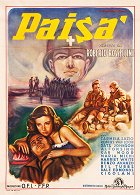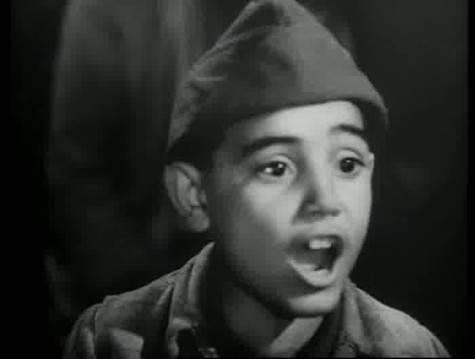Regie:
Roberto RosselliniKamera:
Otello MartelliMusik:
Renzo RosselliniBesetzung:
Carmela Sazio, Robert Van Loon, Maria Michi, Harriet Medin, Renzo Avanzo, William Tubbs, Gar Moore, Dots Johnson, Alfonsino Pasca, Giulietta Masina (mehr)Inhalte(1)
Der Film spielt im deutsch-besetzten Italien kurz vor dem Ende des Zweiten Weltkriegs. Er zeigt die Befreiung des Landes durch die alliierten Truppen und gliedert sich in sechs Episoden. Zwischen den einzelnen Abschnitten des Films sind authentische Wochenschau-Beiträge zum Vormarsch der amerikanischen Soldaten zu sehen. (Verleiher-Text)
(mehr)Kritiken (2)
I have a problem with many Italian neorealism films in that they are simply hard to digest for me. But Paisan is not one of them. It is an excellent war film in every aspect that speaks volumes about what war means to its participants and the civilian population. It is an anthology film with six separate stories that, understandably, do not have the same level, as is typical for anthology films, but all of them have a decent and meaningful point. Indeed, Roberto Rossellini is not skilled when it comes to war scenes, but that does not significantly harm the film because there is only one battle scene in the final story. It is chaotically edited and poorly shot, but in Paisan, the micro-stories that have nothing to do directly with the war turmoil are much more important. The individual episodes may seem random, but together they form an impressive whole that is authentic and tells of the atmosphere of a country permeated by the front line. The story set in the ancient monastery, which is visited by a trio of American field priests, and where a confrontation between Catholic thinking and American openness occurs, was impressive to me. For Italian monks, it is absolutely impossible to understand that a Catholic priest gets along well with a Protestant priest and a Jewish rabbi, and together they console soldiers. For all the stories, it is typical that concepts such as truth, love, justice, and bravery can be quite relative in heated situations. Rossellini does not moralize; he simply shows what he witnessed during the war. Overall impression: 90%.
()
Neorealism may not appeal to everyone, but it cannot be denied that there is power in what it portrays and how it portrays it. When the Americans cast a man who had actually lost his hands in the film "The Best Years of Our Lives", it was criticized. It is not surprising, as it appears to be pretense in Hollywood style. This is not a concern in neorealism. It relies on non-professional actors, which has a strong impact on the viewer's emotions. And here are the scenes that have this impact.
()

